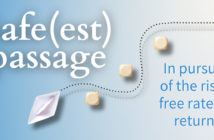Getting to the bottom of CMBS loan pricing
Pricing mortgages in the commercial real estate finance market isn’t as efficient as in the residential mortgage market. For a 10-year fixed rate commercial loan, however, CMBS loans (loans that are ultimately securitized into CMBS bonds) are the gold standard. Other lenders, banks, debt funds, life companies, and real estate private equity shops all price their loans off of the CMBS market. Pricing CMBS loans is both an art and a science. The art of the pricing exercise is the ability to judge how various constituents will treat the loan within a pool of other loans, while the science involves the actual cashflows and uses models to calculate the loan’s real risk. By combining both sides, capital markets are able to devise a spread over an index rate, which ultimately converts into a fixed interest rate for the life of the loan.
There are three main components of pricing a CMBS loan. First, is rating agency treatment of the loan, second is the pricing of the various bond tranches at any given time in the market, and third is treatment by the B-piece buyers or the hedge fund that buys the first loss piece.
1. RATING THE LOAN
Rating agencies such as Standard & Poor’s, Fitch, Moody’s, DBRS, Morningstar, and Kroll act as gatekeepers for the investment grade bond buyers and the agencies’ feedback or rating on a loan is a key ingredient when pricing a loan. These rating agencies vie for business from the investment banks that put together the bond pools. Powerhouse Fitch has emerged as the favorite and evaluates the lion’s share of credit risk for CMBS bond investors.
Here’s how the rating process works: After taking into account the loan’s historical cashflows and depending on the probability of the loan to default and the loss it may experience after the default, the agency’s rating model will assign a credit haircut to the cash flows. The model bases its results on the durability and sustainability of cashflow and evaluates potential risks that might disrupt that cashflow during the life of the loan – typically 10 years. Feeding into Fitch’s model are factors such as the asset’s condition and location, as well as the area’s employment rate, growth factors, travel, political landscape, crime situation, and population spending habits.
Analyzing all pertinent information is of course time consuming. As a result, many lenders will try to estimate what the rating agency feedback will be before they fully evaluate all the data points. Once the cashflows are fully vetted and due diligence is completed, the investment banks submit the loans to the rating agencies for formal feedback. If this formal feedback differs widely from the lender’s original estimates, it makes for a more volatile and uncertain closing for the borrower. Involving an experienced intermediary in the transaction can give borrowers more control, because he or she can advocate for the borrower, keep all sides honest, and offer creative solutions to help soften the blow.
2. PRICING BONDS
The two types of bond trading are primary and secondary market trading. When bonds are initially sold, they are called primary market bonds. Secondary market bonds are the bonds that are traded in the open market after the bonds are already outstanding. Both primary and secondary bond spreads play a key role in pricing a CMBS loan. The two main tranches of bonds constantly being priced in the market – AAA- and BB-rated bonds – have a spread attached to them that’s always updating. In a volatile environment, bond spreads can swing widely. The prevailing bond spreads determine what the spread on a particular loan would be and how much money the lending institution will make on a particular loan. The lender is taking the risk when it closes the loan between the time it closes and the time it securitizes. If bond spreads move significantly, due to a market event, these lenders could end up taking large losses on the loans they close. This is why some lenders come back and change the spread on a loan at the time of closing.
Determining which loans get included in which pool comes down to politics and negotiations. Leveraging the right resources can help ensure borrowers get to the closing table.
3. B-PIECE BUYERS
The third component is the B-piece buyers. Just like the equity provider in a real-estate transaction calls the shots, they also get to enjoy all of the upside. The B-piece buyer acts as the gatekeeper for the riskiest loans in the pool. Usually, a private equity firm or a hedge fund, the B-piece buyer is buying a first loss piece for about 18% to 19% return on their piece or the bonds. If a loan goes bad, they’re the ones who will have to take the first loss up to about 5% of the total pool. As a result, B-piece buyers are uber-focused on the riskiest loans that have the highest probability of loss. This is important for the pricing process because sometimes the B-piece buyer will horse-trade for a loan to be included in the pool in exchange for a “price adjustment.” In other words, the buyer believes that loan should cost more to be included in the pool. This price adjustment is passed on to the borrower in the form of spread change.
Determining which loans get included in which pool comes down to politics and negotiations. Leveraging the right resources can help ensure borrowers get to the closing table. For example, it would be imprudent for a borrower to try to close a capital markets-backed loan with an SBA or a regular loan broker. Borrowers can increase certainty of execution by working with an intermediary or mortgage banker who understand CMBS, is constantly in the market, and knows which lenders have more muscle and better relationships with the B-piece buyer community.





